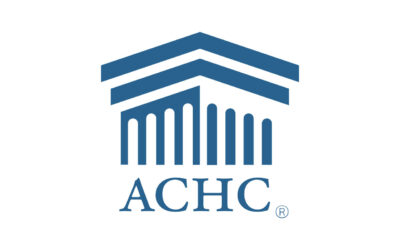By Steven C. Eror

Steven C. Eror
New perspectives have emerged from the COVID-19 crisis that shed new light on operating room management. The challenges we faced, and the lessons we learned in this period inspired us to rethink, to re-imagine and to re-assess our methods and procedures.
Anesthesiology is area where new modalities arising from the pandemic are conspicuous. The use of regional anesthesia or nerve blocks coupled with light sedation is expected to double this year. Regional anesthesia is administered by injecting an anesthetic near the nerve, numbing only that specific area of the body. Regional anesthesia is now recommended for hip and knee replacements, some hernia operations, minor gynecological procedures and surgery for hemorrhoids, as well as shoulder, arm, hand, knee and foot injuries. In its continuous form, regional anesthesia is achieved by placing a catheter to modulate anesthesia for hours or days. A patient’s willingness to receive regional anesthesia may shorten the wait for surgery and reduce the risk of infection for the patient and for the surgical team.
Lesson One: Regional Anesthesia Reduces the Risk of Patient and Operating Staff Infection
Is general anesthesia always necessary? Manipulating the airway by inserting and removing a breathing tube or laryngeal masks, such as it is required for general anesthesia, produces viral particles that could spread COVID-19 to the operating room staff. According to one UK study, 3% of the operating staff became infected with COVID-19 when exposed to an infected patient. Today there is a fresh focus upon managing viral infection in the operating room that includes considering regional anesthesia for many procedures.
For surgical patients during the COVID-19 pandemic, it would not be unusual for your anesthesiologist to offer a local or regional anesthesia option for your surgery. Dr. Sundar Rajendran, a noted Colorado anesthesiologist commented, “Increasingly, when appropriate, I offer regional anesthesia to my patients either in combination with general anesthesia or on its own coupled with mild sedation. The benefits of not manipulating the airway as required for general anesthesia protects everyone. Recovery is faster and more pleasant. There is also an opportunity, using innovative regional nerve block techniques to manage post-surgical pain without oral opioids.”
Research shows that patients who use a local anesthetic in lieu of general anesthesia are also less likely to become infected. For patients, regional anesthesia has fewer side effects such as prolonged sedation, reduction or elimination of nausea and vomiting as well as a faster discharge from the facility. Patients typically express their surprise with the speed of onset, and the effectiveness, the pleasantness of recovery, the convenience of home block management and lack of cognitive impairment and GI disruption.
Lesson Two: Regional Anesthesia Reduces Risk of Oral Opioid Abuse
When a compact indwelling catheter is placed for peripheral pain management before surgery, the location of the regional block is confirmed, the medication may be regulated upward, downward or eliminated altogether. During the recent pandemic lockdown, patients were encouraged to minimize the time that they stayed in a hospital or surgical facility. Patients over the age of 18 were not to be accompanied and visitation was restricted. Anesthesiologists using regional options could assist compliance with guidelines by extending patient’s local anesthesia to their home by leaving the indwelling catheter in place and coupling it with medication and a pump. The need to supervise the use of oral opioids is reduced or eliminated for the most painful period of recovery, the first 72 hours. The home is one step closer to becoming the hospital of the future.
“From a nurse’s perspective, we see fewer difficult recoveries after surgery with regional anesthesia. Patient satisfaction tends to be higher. In order to manage pain, new approaches allow us to modulate medication, use less medication and to track patients during home recovery,” says Katie Vieux, RN, BSN, director of nursing at a Colorado surgical center. According to the CDC, eliminating opioid use during the first three days after a surgery dramatically reduces the potential of addiction that takes the lives of 40 Americans per day.
Lesson Three: Regional Anesthesia Offers Scheduling Advantages
During the pandemic, some surgery centers focused upon elective procedures were ordered to close. The reasons for the closures are many, but two of the most common are: “If a patient can choose to have surgery at a later date, why not postpone surgery?” and “The medical resources tied up for elective procedures are needed on the front line. “
Even as the tide of the pandemic is now ebbing, the scheduling advantages of regional anesthesia are revealed: regional anesthesia is less stressful on the patient, on surgical staff and on the hospital or surgical center. Patients suffering with medical complications that may or may not be dissipated with the passage of time, can be considered surgery with regional anesthesia. Nurse director Katie Vieux added, “It is not just about the surgery itself. The arrival of COVID-19 has greatly expanded the need for careful planning, staffing challenges and training, as well as clinical compliance.”
Lesson Four: Regional Anesthesia has Innovated to Overcome Technical Challenges
In medical residency, most anesthesiologists become proficient in the placement of a peripheral nerve block. Ultrasound visualization has largely replaced electrical stimulation to confirm placement. New catheter-over-the-needle catheter designs dramatically reduce the steps required to efficiently place a block. One catheter innovator, Solo-Dex, uses a proprietary catheter-over-the needle design that slips smoothly past the skin with use of a conventional syringe. Once the block is placed, the physician simply withdraws the needle, leaving behind an indwelling catheter in place for 72 hours of pain management. This is a clean, but nonsterile procedure the requires three minutes and the catheter may be gently removed at home by the patient.
The ease of use of new technologies coupled with the new guidelines are motivating anesthesiologists who do not routinely offer continuous regional nerve blocks to place them. The arrival of ultrasound visualization coupled with precision catheter placement of an over-the-needle device can achieve numbness in the desired area in less than five minutes with the ease of motion as standard single injection nerve blocks. The catheter remains in place to permit increases or decreases in anesthetic before, during and after surgery. Lower doses are required because additional anesthetic may be added as required when needed. Some innovations are so easy to use that they are elevating confidence in anesthesiologists who learned how to place a nerve block in residency, but have become less comfortable over the years.
Some medical technologists project that the use of regional anesthesia may increase as much as tenfold with the introduction of devices that are as easy to place as a routine injection within the decade.
The awareness that regional anesthesia has innovated surgical and recovery pain management became evident to patients, providers and payors during the crisis of the pandemic. The lessons learned will support the opportunity to improve the way we provide care.
– Steven C. Eror is a member of the American Society of Regional Anesthesia and Pain Medicine, and BIO and is CEO and director of SOLO-DEX Inc. Eror is a seasoned investor and became chief executive in successful companies. He is an internationalist and entrepreneur with several patents in diagnostic and therapeutic indications and is a former adjunct professor of finance, David Eccles Graduate School of Business at the University of Utah where he received a bachelor’s in economics and French and an MBA. He is also a Fellow at the National Association of Corporate Directors. He can be reached at Steve.Eror@hilltopgroup360.com









